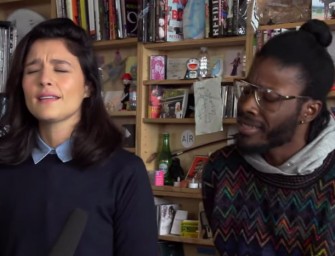
Harriet Tubman’s Goodle Doodle Tribute
Google kicked off Black History Month on Saturday with a Google Doodle of Harriet Tubman (1820 – March 10, 1913), American abolitionist, spy, Civil War commander, and most notably — conductor of the Underground Railroad.
Tubman was born a slave in Maryland, and worked as a maid, nurse, and cook before she fled to Philadelphia in 1849. In December 1850, she returned to Maryland to help her sister and two children escape.
She spent the next 11 years rescuing some 300 slaves in about 19 expeditions, becoming the best-known conductor of the Underground Railroad, a secret network that helped fugitive slaves in the South reach safety in Northern free states or in Canada.
Tubman often dressed the escapees in disguises, according to the National Women’s History Museum :
“If it was announced that a group of male slaves had bolted from a plantation, she dressed the fugitives as women for the trip north.” Her dedication earned her the nickname “Moses.”
The heroine went on to serve as a nurse and a spy for the Union Army during the Civil War, pretending to be an old, frail woman and wander around towns under Confederate control to get clues about the whereabouts of troops and supplies.
Tubman was also the first woman to lead an armed expedition in the war, guiding the Combahee River Raid, which liberated more than 700 slaves in South Carolina. She didn’t receive a pension for her service in the Civil War until 1899.
When a biography of Tubman was being prepared in 1868, Fellow abolitionist and former slave Frederick Douglass rote a letter to honor her. See an excerpt below:
“You ask for what you do not need when you call upon me for a word of commendation. I need such words from you far more than you can need them from me, especially where your superior labors and devotion to the cause of the lately enslaved of our land are known as I know them. The difference between us is very marked. Most that I have done and suffered in the service of our cause has been in public, and I have received much encouragement at every step of the way. You, on the other hand, have labored in a private way. I have wrought in the day—you in the night. … The midnight sky and the silent stars have been the witnesses of your devotion to freedom and of your heroism. Excepting John Brown—of sacred memory—I know of no one who has willingly encountered more perils and hardships to serve our enslaved people than you have.”
Tubman ended her long career campaigning for women’s suffrage in New York before being overcome with illness and dying of pneumonia in 1913.
In March 2013, President Barack Obama signed a proclamation to establish the Harriet Tubman Underground Railroad National Monument, and a state park is expected to open in Maryland in 2015.

















